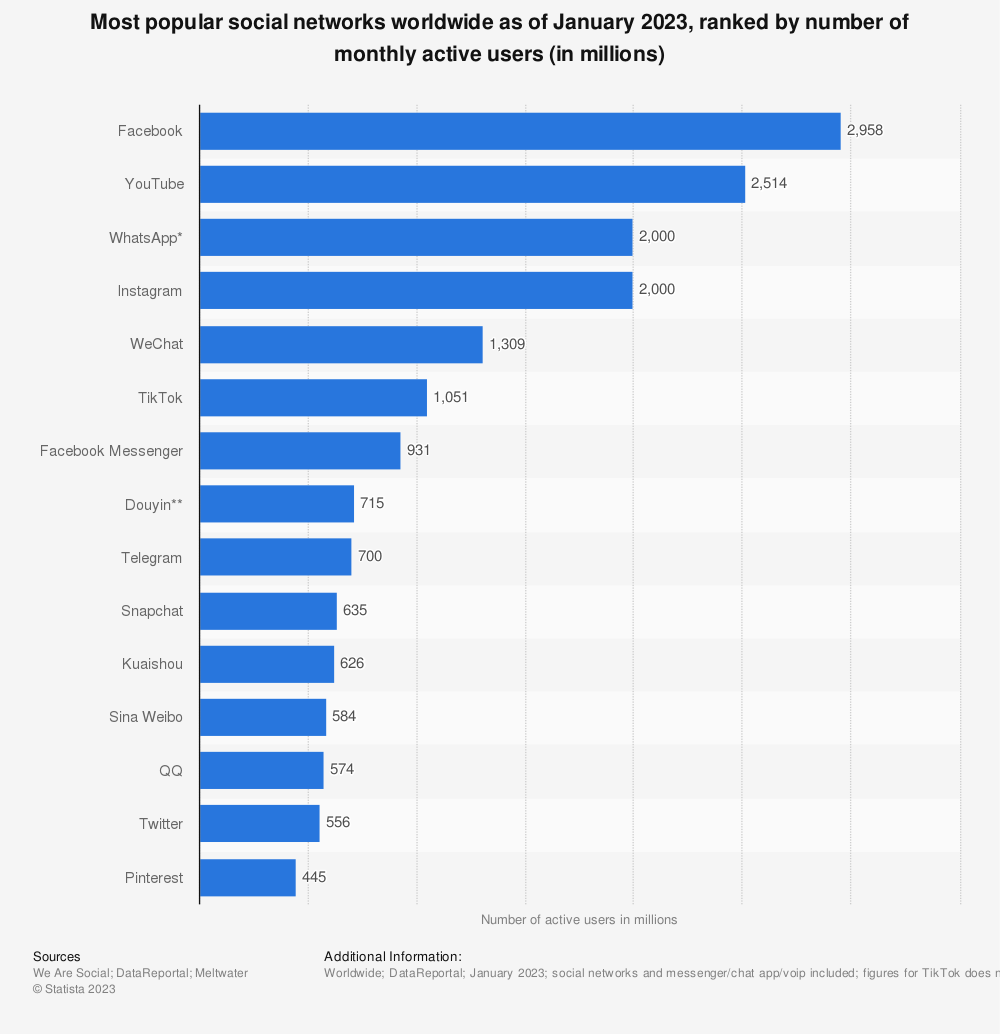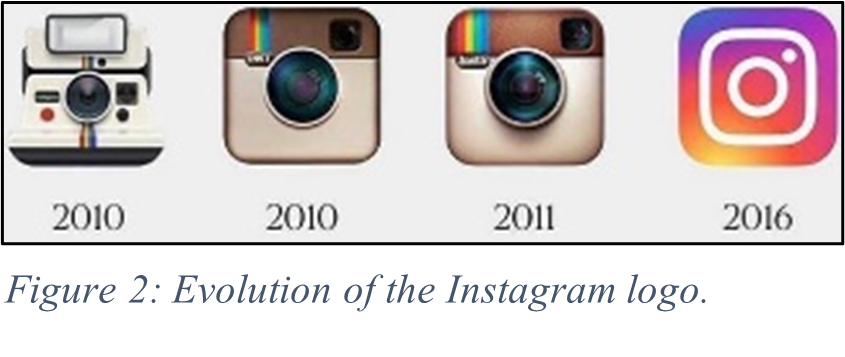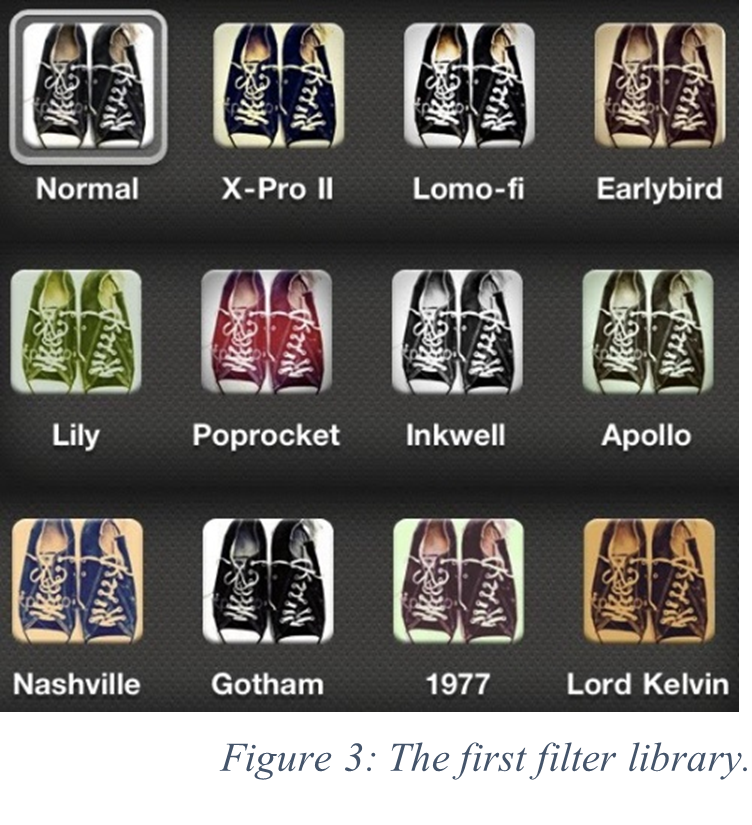
A picture is often believed to say more than a thousand words, but does it always tell the truth?
 …and what impact do these pictures have on our perception of reality?
…and what impact do these pictures have on our perception of reality?
Launched for iOS smartphones in late 2010, the idea behind Instagram was to facilitate photo sharing (with a check-in feature that was quickly scrapped). The app had only been out for two years when it was bought by Facebook in 2012 and sources allege intentions started to change.
At the time, Instagram only had 13 employees, some of whom have later expressed their surprise and disappointment with the sale, as Facebook is widely considered to be the giant in social media (Figure 1). Although the company had gotten a massive amount ($500,000) in a seed funding round, the staff felt that Instagram was not at all compatible with the famously growth-driven Facebook but rather meant to have a happy-hippy-vibe, connecting people by providing a sort of window between worlds.

Comparing the first logo (Figure 2) with the most recent one, perhaps portraits how far the software has come from its origins of a clear instant-print camera, famous for capturing unedited moments, to ambiguous outlines vaguely reminding us of something we recognize.

With the introduction of filters, an everyday iPhone owner was suddenly able to elevate the look of their photos to a professional level in a quick and easy way. The objective was merely to give photos a certain characteristic look (Figure 3), and as we can see, the effects were quite simple with rarely any doubt whether a filter was being used or not.
.
Filters have since become much more powerful than we could have imagined back then, in many cases effortlessly altering the appearance of human faces and bodies, often catering to homogeneous, unrealistic standards set and maintained by the extremely toxic glamour/fashion industry. This is often said to contribute to deteriorating mental health of teens, young adults, and others who feel their value is connected to their appearance.
Augmented reality filters were added to the platform in 2017 and as with so many previous leaps in technological advancements people struggled to understand them, and the platform neglected to ensure correct and ethical use. The subtlety of filters now varies greatly and while there has been a huge wave of realisation about the fact that people do not necessarily look like their Instagram photos in reality, in some ways I feel this practice is at least not worse than diving into debt for things one cannot afford in order to project a certain persona.
On a positive note, some research suggests that body-positive posts can help counter the negative effects of social media.
My biggest personal grievance with the platform is the ad aspect. The lines between people and products are so blurred it is evident that even the actors themselves often seem unaware of the role they play by choosing the noble-sounding title influencer. In the Instagram universe, a delusion persists towards the definition of an advertisement, manifesting for example in how “influencers” sometimes tag their posts as sponsored or in collaboration with a company, furthering the illusion that they are simply sharing their personal recommendations just as you would with a friend looking for advice, rejecting the reality that is: they are literally a part of companies’ marketing budgets. For perspective: Waiters are undeniably employees at restaurants regardless of their opinion of the food. Just as a DJ is providing a service for a club, even if they enjoy the music.
We must reiterate the difference between advertisements and advice from friends and hold companies responsible for deliberately releasing hidden or misleading ads along with other illegal and unethical marketing related practices.
Social media’s general rising role in our lives also seems to encourage people's tendency to outsource everyday life, leading to fewer meaningful human encounters and connections, leaving emotional voids and hopeless efforts to fill them with another hit, another like, another view, another superficial attempt to impress strangers and acquaintances. Shifting away from casually helping each other out, as a community, towards hiring the services we cannot or choose not to do ourselves.
Contributing to the vicious cycle of neglecting the need to be needed by spending less time with friends and family and more time making the money to buy the stuff and the services to fix the feeling of the inadequacy and the uncertainty (Figure 4).

Figure 4: Visual representation of author's feelings when a new social media platform is introduced
Investigative journalist Johann Hari[1]–[4] and engineer Tristan Harris[5] have delved into the topic of social media's impact on our lives. Hari's works explore how many are becoming more isolated by focusing on individual needs and identities, while Harris explains how engineers brilliantly calculate how to keep users continuously engaging with their media without any regard for user-well-being.
In conclusion, while abstinence is nonoptimal we must be conscious of the platforms' impact on our lives and strive to seek meaningful connections beyond social media. My highest recommendations go to Hari’s books (also on Audible) Lost Connections and Chasing the Scream and TED-talk if you only have time for the gist of his philosophy.
Höfundur: Inga Ingólfsdóttir nemandi við Háskólann í Reykjavík
[1] J. Hari, Chasing the Scream: The Search for the Truth About Addiction. Bloomsbury Publishing, 2015. [Online]. Available: https://books.google.is/books?id=i0cwBQAAQBAJ
[2] J. Hari, Lost Connections: Uncovering the Real Causes of Depression - and the Unexpected Solutions. Bloomsbury, 2018. [Online]. Available: https://books.google.is/books?id=P6gyEAAAQBAJ
[3] J. Hari, Stolen Focus: The Surprising Reason You Can’t Pay Attention. Bloomsbury Publishing Plc, 2022. [Online]. Available: https://books.google.is/books?id=59QczwEACAAJ
[4] J. Hari, ‘Johann Hari: This could be why you’re depressed or anxious | TED Talk’. https://www.ted.com/talks/johann_hari_this_could_be_why_you_re_depressed_or_anxious (accessed Nov. 23, 2022).
[5] T. Harris, ‘Tristan Harris: How a handful of tech companies control billions of minds every day | TED Talk’. https://www.ted.com/talks/tristan_harris_how_a_handful_of_tech_companies_control_billions_of_minds_every_day (accessed Nov. 23, 2022).
Figure 1: Global social networks ranked by number of users 2023, https://www.statista.com/statistics/272014/global-social-networks-ranked-by-number-of-users/
Figure 2: Evolution of the Instagram logo.
Figure 3: The first Instagram filter library.
Figure 4: Visual representation of author's feelings when a new social media platform is introduced.
Skil á efni
Leita í vefútgáfu Tölvumála
Um Tölvumál
Tölvumál - tímarit Skýrslutæknifélags Íslands er óháð tímarit um tölvutækni og hefur verið gefið út frá árinu 1976.
Vefútgáfa Tölvumála birtir vikulega nýja grein á vef Ský og árlega er gefið út veglegt prentað tímarit undir nafninu "Tölvumál" þar sem fjallað er um tölvutækni frá ýmsum sjónarhornum og er þema blaðsins jafnan valið snemma árs og útgáfa að hausti.
Ritnefnd Ský sér um að afla efni í Tölvumál og geta allir sem áhuga hafa sent inn efni.
